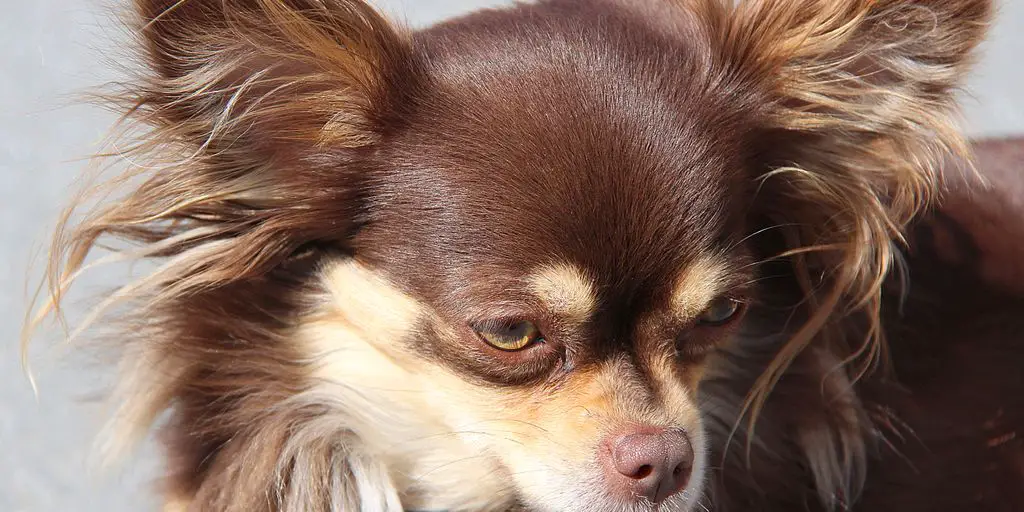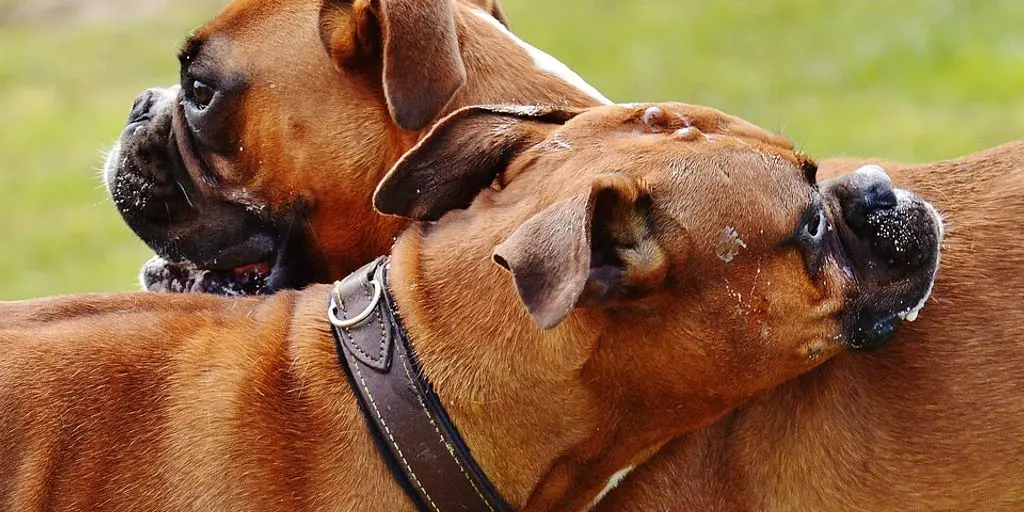Training a Pitbull to be a well-behaved companion involves understanding their unique traits, starting early with puppy training, and employing effective techniques. Pitbulls are known for their loyalty, strength, and intelligence, making them both a joy and a challenge to train. This article will guide you through various training techniques, from basic commands to advanced training, ensuring your Pitbull becomes a disciplined and happy member of your family.
Key Takeaways
- Understanding your Pitbull’s unique traits is crucial for effective training.
- Starting training early, especially during the puppy stage, sets a strong foundation.
- Positive reinforcement techniques, such as using treats and praise, are highly effective.
- Consistency in commands and routines is key to successful training.
- Addressing behavioral issues promptly helps in maintaining a well-behaved Pitbull.
Understanding Your Pitbull’s Unique Traits
Understanding your pitbull’s background, health, and temperament will provide you with valuable insights that will inform your training approach. Patience and consistency are key, as is the need for a firm but loving hand. Obedience training, employing positive reinforcement techniques such as clicker training, can be highly effective with this intelligent breed.
Starting Early: The Importance of Puppy Training

Training your pitbull puppy from an early age is crucial for their development and behavior. Starting early helps in shaping a well-mannered and social dog. Let’s dive into the benefits and tips for early training.
Benefits of Early Training
Early training sets the foundation for a well-behaved dog. It helps in establishing good habits and prevents the development of unwanted behaviors. Puppies are like sponges; they absorb everything around them, making it the perfect time to introduce basic commands and house training.
Socialization Tips for Puppies
Socializing your puppy early is essential. The critical socialization period spans from week three to week 12–14. During this time, expose your puppy to various environments, people, and other animals. This helps them become tolerant, calm, and outgoing adults. Remember, a well-socialized puppy is less likely to develop aggressive behaviors.
- Train and socialize immediately: Start socializing your puppy as soon as you bring them home.
- Introduce new experiences gradually: Allow your puppy to approach new things in its own time.
- Encourage gentle handling: Pet your puppy often and encourage gentle handling by others.
Setting a Routine
Establishing a routine is vital for your puppy’s training. Consistency helps your puppy understand what is expected of them. Set regular times for feeding, potty training, and playtime. A structured routine makes house training easier and helps your puppy feel secure.
A well-informed dog owner is often better equipped to provide the right training and care, which translates to a happier, healthier pitbull puppy and a more fulfilling relationship between you and your new companion.
Positive Reinforcement Techniques
Using Treats and Praise
When it comes to training your pitbull, positive reinforcement is the key. This method involves rewarding your dog for good behavior rather than punishing them for bad behavior. You can use treats, praise, or even a favorite toy as a reward. The goal is to make your dog associate good behavior with positive outcomes. This approach not only helps in effective dog training but also strengthens the bond between you and your furry friend.
Clicker Training Basics
Clicker training is a popular form of positive reinforcement. It involves using a small device that makes a clicking sound to mark the exact moment your dog performs the desired behavior. After the click, you give your dog a treat. This method is highly effective because it provides clear and immediate feedback to your dog. It’s a great way to teach new commands and tricks quickly.
Avoiding Punishment-Based Methods
It’s crucial to avoid punishment-based methods when training your pitbull. These methods can lead to fear and anxiety, which are counterproductive to effective training. Instead, focus on positive reinforcement techniques like using treats and praise. Remember, staying committed to your four-legged friend with patience and consistency will yield the best results.
With patience and persistence, positive reinforcement can be an effective way to raise a happy, well-behaved pitbull.
Teaching Basic Commands
Teaching your Pitbull basic commands is essential for their safety and your peace of mind. These commands can also help your Pitbull feel more confident and secure in their role as a family dog. As your Pitbull learns more, you may increase the complexity of your orders.
Addressing Behavioral Issues

Dealing with Aggression
Aggression in Pitbulls can be a serious issue, but it’s important to understand that it often stems from fear or anxiety. Never use physical punishment as it can exacerbate the problem. Instead, focus on positive reinforcement and consistent training. If your Pitbull’s aggression is challenging to manage, consider partnering with a canine behavioral therapist for help.
Managing Separation Anxiety
Separation anxiety is common in many dogs, including Pitbulls. To help your dog cope, start by leaving them alone for short periods and gradually increase the time. Make sure they have plenty of toys and chews to keep them occupied. If the anxiety persists, you might need to consult a professional for additional strategies.
Correcting Unwanted Behaviors
From digging to chewing, there are many dog behavioral issues pet parents face. The key is to identify the root cause of the behavior. For instance, if your Pitbull is digging up the yard, it might be due to insufficient exercise. Ensure they’re getting the right amount of physical activity and redirect their energy with appropriate toys and activities.
Consistency means that you should always use the same commands and rewards, and follow through with them every time. This helps your Pitbull understand what is expected of them and reinforces good behavior.
Exercise and Mental Stimulation
Daily Exercise Needs
Pitbulls are energetic dogs that require a good amount of daily exercise to stay healthy and happy. I recommend at least an hour of vigorous activity each day. This can include walks, runs, or playtime in a securely fenced yard. Remember, a tired dog is a well-behaved dog!
Fun Activities to Engage Your Pitbull
Keeping your Pitbull engaged is crucial. Some fun activities include:
- Tug-of-war
- Fetch
- Agility training
- Swimming
These activities not only provide physical exercise but also help in building a strong bond between you and your dog.
Mental Stimulation Games
Mental enrichment is also very important for these intelligent pups. I recommend daily training sessions inside and outside the home, as well as “brain games” like scent work and retrieving specific items. I also love using a flirt pole (basically a large cat toy) as a reward for impulse control exercises during training sessions because most pit bulls love to chase. Mental enrichment also comes in the form of exploring new places, so bring your dog to new hiking spots and allow them to explore!
Incorporating puzzle toys, interactive games, and learning new tricks into your training routine not only provides mental stimulation but also reinforces training lessons and strengthens your bond with your Pitbull.
Using Training Tools Effectively
When it comes to mastering Pitbull training, having the right tools at hand is crucial. One such tool that has revolutionized the way we interact with and train our dogs is the FI Dog Collar. Choosing the right collar can make a world of difference in your training efforts. Let’s dive into the various tools and how to use them effectively.
Choosing the Right Collar
Selecting the right collar for your Pitbull is essential. There are various types of collars available, each serving a different purpose. For instance, a flat collar is great for everyday use, while a martingale collar can be useful for training sessions. Here’s a quick comparison:
| Collar Type | Purpose | Pros | Cons |
|---|---|---|---|
| Flat Collar | Everyday use | Comfortable, easy to use | Limited control |
| Martingale Collar | Training sessions | Better control, prevents slipping | Can be harsh if misused |
| Prong Collar | Correcting behavior | Effective for strong pullers | Can cause injury if misused |
Harness vs. Collar Debate
The debate between using a harness or a collar is ongoing. While collars are great for general use, harnesses can provide better control and reduce strain on your dog’s neck. Here are some points to consider:
- Harnesses distribute pressure more evenly across your dog’s body, making them ideal for dogs that pull a lot.
- Collars are easier to put on and take off, making them convenient for quick outings.
- Some dogs may find harnesses uncomfortable, especially if not fitted properly.
Safe Use of Shock Collars
Shock collars can be a controversial topic. However, when used correctly, they can be an effective training tool. It’s important to understand the different stimulation modes available:
- Tone or Beep: This mode sends an alarm signal to your dog, which can be useful for basic training.
- Vibration: This mode is ideal for getting your dog’s attention without causing pain.
- Shock: This should be used as a last resort and always at the lowest effective setting.
Remember, the cruelty of a shock collar depends on usage, and if you use it correctly, it will never harm your dog.
In conclusion, the right training tools can make a significant difference in your Pitbull’s training journey. Always choose tools that are appropriate for your dog’s specific needs and use them responsibly.
Socializing Your Pitbull with Other Dogs
Socializing your Pitbull is crucial for their development and overall well-being. Exposing your dog to a variety of different places, people, and animals will help them become well-adjusted and comfortable in various environments. This not only prevents potential aggression issues but also ensures your Pitbull grows up to be a friendly and confident dog.
Advanced Training Techniques
Agility Training
Agility training is a fantastic way to keep your Pitbull physically fit and mentally stimulated. It involves navigating through an obstacle course, which can include jumps, tunnels, and weave poles. Pitbulls are very loyal, energetic, and eager to learn, making them excellent candidates for agility training. Start with basic obstacles and gradually increase the difficulty as your dog becomes more confident and skilled.
Obedience Competitions
Participating in obedience competitions can be a rewarding experience for both you and your Pitbull. These competitions test your dog’s ability to follow commands and perform tasks with precision. The key to success is consistent training and positive reinforcement. Remember, the goal is not just to win but to strengthen the bond between you and your dog.
Therapy Dog Training
Training your Pitbull to be a therapy dog can be incredibly fulfilling. Therapy dogs visit hospitals, schools, and nursing homes to provide comfort and companionship. The training focuses on ensuring your dog is calm, gentle, and well-behaved in various settings. Seek professional training assistance if you’re unsure where to start. The impact your Pitbull can have as a therapy dog is profound, offering emotional support to those in need.
Advanced training techniques not only enhance your dog’s skills but also deepen your relationship with them. Whether it’s agility, obedience, or therapy work, the journey is as rewarding as the destination.
Common Pitbull Training Mistakes to Avoid
Training a Pitbull can be a rewarding experience, but it’s easy to make mistakes along the way. Here are some common pitfalls to watch out for:
Inconsistency in Commands
One of the biggest mistakes you can make is being inconsistent with your commands. If you use different words or tones for the same command, your Pitbull will get confused. Consistency is key to effective training. Make sure everyone in the household is on the same page to avoid confusing your dog.
Overusing Treats
While treats are a great way to reward good behavior, overusing them can lead to problems. Your Pitbull might start to expect a treat every time they obey a command, which can be counterproductive. Instead, mix it up with praise and affection to keep them motivated.
Ignoring Small Wins
It’s easy to overlook the small victories, but they are crucial in the training process. Celebrate the little milestones to keep both you and your Pitbull motivated. A little help can go a long way with everything from poor leash manners to anxiety—and ensure that your dog’s small problems don’t turn into big ones.
Remember, training is a marathon, not a sprint. Patience and consistency will pay off in the long run.
Avoid using harsh training tools like a prong collar unless absolutely necessary. These can cause more harm than good if not used correctly. Stick to positive reinforcement techniques for the best results in your pitbull training journey.
Maintaining Training Consistency
Maintaining consistency in training your Pitbull is crucial for long-term success. Consistency means using the same commands and rewards every time, which helps your dog understand what is expected of them. This reinforces good behavior and makes training more effective.
Setting Long-Term Goals
When setting long-term goals, it’s important to be realistic and patient. Break down larger goals into smaller, manageable steps. This way, you can celebrate small wins along the way, keeping both you and your Pitbull motivated.
Involving Family Members
Training should be a family affair. Make sure everyone in the household is on the same page and uses the same commands and techniques. This unified approach helps in establishing a consistent routine for your Pitbull.
Regular Training Sessions
Regular training sessions are key to maintaining consistency. Short, daily sessions are more effective than longer, infrequent ones. This keeps your Pitbull engaged and reinforces the behaviors you want to see.
Patience, consistency, and positive reinforcement are key when training an apprehensive Pitbull. Establishing trust through calm, gentle interactions and regular training sessions will yield the best results.
Conclusion
Training your Pitbull can be a rewarding experience filled with lots of tail wags and happy moments. Remember, the key to success is patience, consistency, and a whole lot of positive reinforcement. Every dog is unique, so what works for one might not work for another. Don’t get discouraged if things don’t go perfectly right away. Keep at it, and you’ll soon have a well-behaved Pitbull who is not only a joy to be around but also a beloved member of your family. Happy training!
Frequently Asked Questions
What are the best training methods for Pitbulls?
Positive reinforcement is the most effective training method for Pitbulls. This involves rewarding good behavior with treats, praise, or playtime, rather than punishing bad behavior. Consistency and patience are key, as Pitbulls respond well to routines and clear expectations.
How can I teach my Pitbull to obey basic commands?
Start with essential commands like ‘sit,’ ‘stay,’ ‘come,’ and ‘leave it.’ Use treats and praise as rewards and be consistent with your commands. Training sessions should be short and frequent to keep your Pitbull engaged.
Why is early training important for Pitbulls?
Early training is crucial as it helps to establish good behavior patterns and socialization skills. Puppies are more adaptable and can learn commands and routines more quickly than older dogs.
How do I address aggression in my Pitbull?
Addressing aggression involves identifying the triggers and using positive reinforcement to encourage calm behavior. Consulting a professional trainer or behaviorist can also be beneficial for creating a tailored training plan.
What should I do if my Pitbull has separation anxiety?
Managing separation anxiety involves creating a safe and comfortable environment for your Pitbull when you are away. Gradually increasing the time you spend apart and providing toys or puzzles can help. In severe cases, consult a veterinarian or a professional trainer.
How much exercise does a Pitbull need?
Pitbulls are energetic dogs that require at least 60-90 minutes of exercise daily. This can include walks, playtime, and mental stimulation games to keep them physically and mentally healthy.
Are shock collars safe for Pitbulls?
Shock collars can be safe if used correctly and as a last resort. It’s essential to follow the manufacturer’s guidelines and consult with a professional trainer to ensure it is the right choice for your dog.
What are some common training mistakes to avoid with Pitbulls?
Common mistakes include inconsistency in commands, overusing treats, and ignoring small wins. It’s important to be patient, consistent, and celebrate your Pitbull’s progress, no matter how small.



